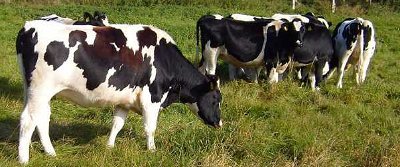All beef, no bull. This is a set of general knowledge questions inspired by some really bad cow jokes. Be warned! You press the start button at your own risk.
Average, 10 Qns, pollucci19,
Feb 10 25
 Here we go, a celebration of all things cow to mark finishing my great cow quiz quest.
Here we go, a celebration of all things cow to mark finishing my great cow quiz quest. |
|
 Quick Question
Quick Question = Top 5% Rated Quiz,
= Top 5% Rated Quiz,
 Top 10% Rated Quiz,
Top 10% Rated Quiz,
 Top 20% Rated Quiz,
Top 20% Rated Quiz,
 A Well Rated Quiz
A Well Rated Quiz
· All questions, answers, and quiz content on this website is copyright FunTrivia, Inc and may not be reproduced without permission. Any images from TV shows and movies are copyright their studios, and are being used under "fair use" for commentary and education.